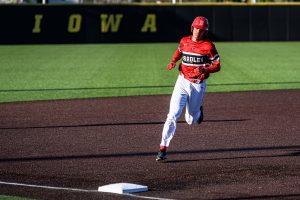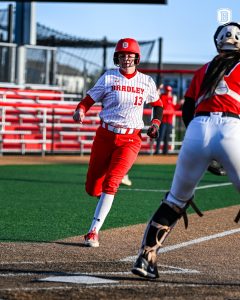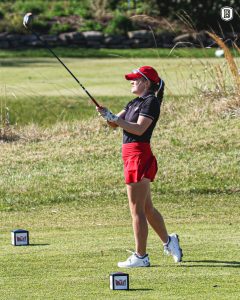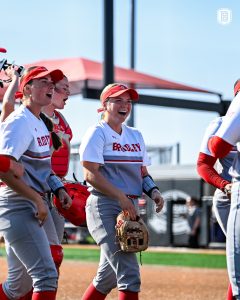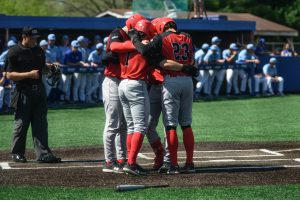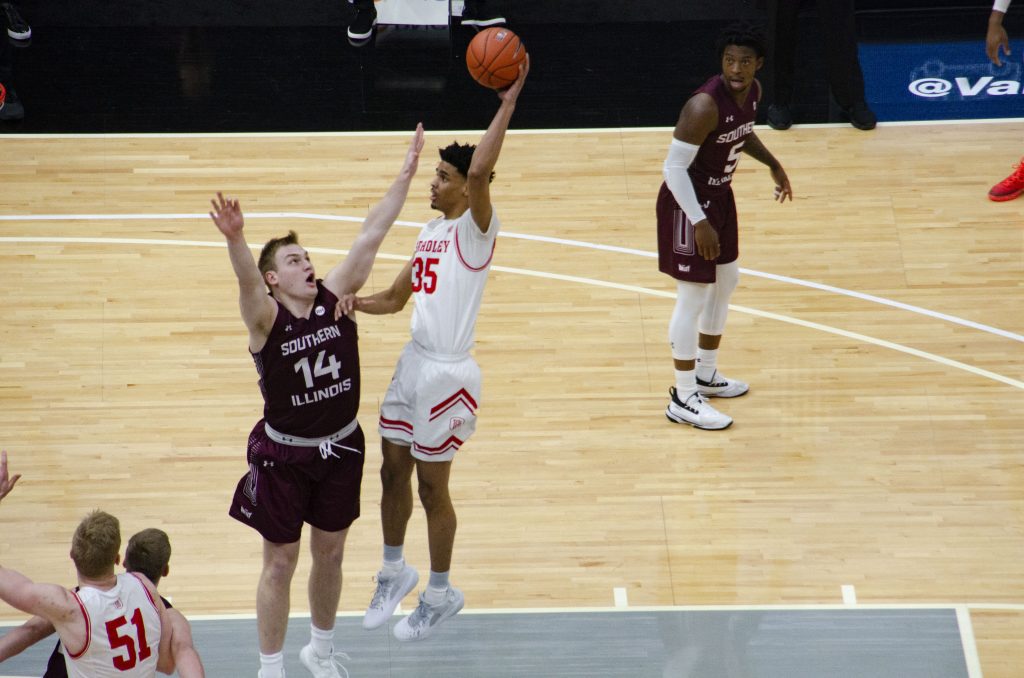
After a season in which Bradley men’s basketball was picked to finish third in the Missouri Valley Conference preseason poll and finished in seventh, bowing out of Arch Madness on Thursday evening, it’s clear that something was off about this year’s team.
Between injuries, suspensions and lack of identity, the 2020-21 campaign was a far cry from the program’s back-to-back MVC tournament championship tours of the previous two seasons.
So, what needs to happen for the Braves to return to their winning ways in a competitive MVC? Naturally, a number of things need to go differently.
To start, here are three things Bradley head coach Brian Wardle and company need to accomplish this offseason to return to glory:
Transfer portal-palooza
With the departure of senior stalwart Elijah Childs combined with the transfers of guards Danya Kingsby sophomore Antonio Thomas and redshirt junior guards Terry Nolan Jr. and Kevin McAdoo, Wardle and company will have a plethora of scholarships to fill.
To make matters more interesting, the Braves have only one signee in the 2021 incoming class: 6-foot-2-inch shooting guard Connor Hickman.
The Braves will likely be in the market for two types of players: a versatile guard who can score at the perimeter and play strong defense at the No. 2-3 position, and an inside scorer at the No. 4 or 5 position.
The Braves struggled with consistency from 3-point land this season, shooting 31 percent compared to last year’s mark of 37 percent. The team’s premier outside shooter, sophomore Ville Tahvanainen, struggled to find consistency all year, shooting 34 percent on a team-high 139 attempts.
While Rienk Mast, Sean East and Jayson Kent are all formidable shooters from outside, an experienced, steady hand will be needed to fill the specific role that was vacated by Nate Kennell.
One possible fit? Marlon Ruffin, 6-foot-5-inch sophomore guard/forward who shot 38 percent beyond the arc while averaging 13.1 PPG for Nebraska-Omaha this season.
As for the inside: The Braves will obviously need to fill the vacancy of the 14.2 PPG that Childs leaves at the No. 4 position. While Mast started at center in place of the injured junior, 7-footer Ari Boya for most of the season, he logically fills that spot if the team wants to run a non-small ball lineup.
So, the open spot lies behind Boya, assuming he’s healthy. A true post scorer or shot-blocker to help the likes of Boya, junior Ja’Shon Henry and freshman Darrius Hannah would go a long way.
Above all, it’s most important that transfers are able to buy in and assimilate quickly into Wardle’s culture and high expectations. It’s not always a sure thing, but as the team learned this season, it may be the most important thing.
The man in the middle
Speaking of Boya, the big man’s absence loomed throughout MVC play, especially on the defensive end. After Boya’s final game on Dec. 22 at Missouri (a near-upset of the then-14th ranked Tigers), Bradley lacked a shot-blocking presence and true post threat.
In Boya’s nine games, the 7-foot-1-inch center compiled 1.5 blocks per game, clogging the lane for opponents. After Boya went down, the Braves’ leading shot blocker (based on per game average) was Hannah, who picked up just 0.83.
Offensively, the absence made things complex. In the Braves’ two tournament championship seasons, they operated with a true center on the floor on nearly every possession, usually featuring the 6-foot-11-inch Koch Bar and Boya.
This season, when Boya went down, Mast or Childs stepped into the five, depending on the lineup. Since Mast’s inside game isn’t his main way of scoring, this sent the opposing defense’s best post defender or a double-team in the direction of Childs.
That threw things off even more when Childs was suspended for the final eight games of the season, forcing Mast to guard and be guarded by the other team’s foremost post threat. Mast handled this better as the season went on and played very well. However, this forced much of BU’s offensive attack to beyond the arc, where the team was largely inconsistent.
If the Braves want to return to their true offensive identity under Wardle — which includes steady scoring in the paint — they’ll need Boya to return and remain healthy, or pick up another big man.
Shut down the perimeter
While nearly everything was inconsistent throughout the 2020-21 campaign, one thing remained the same: Bradley’s knack to allow a hail-mary 3-pointer at the end of the shot clock in nearly every game.
The Braves’ perimeter defense was of such concern this season, it was one of the first things that Brian Wardle mentioned in his post-game press conference following the team’s season-ending loss to SIU.
The numbers don’t disagree. Bradley allowed a 3-point percentage of 37 this season, compared to 31 percent last season and 33 percent in 2018-19.
Perhaps the most alarming stat of them all is the sheer volume at which the longballs were allowed. The Braves surrendered 10 or more 3-pointers in a whopping 14 games this season, resulting in a 5-9 record in those contests.
For comparison, Bradley allowed 10 or more makes from beyond the arc 11 times last season, when the team played six more games.
The bottom line is a complete 180 will not happen overnight. Players need to buy in and consolidate behind Wardle’s identity for the program — most of which revolves around defense on the floor and intangibles off the floor.
The fact of the matter is, it takes more than numbers to find the right pieces.
